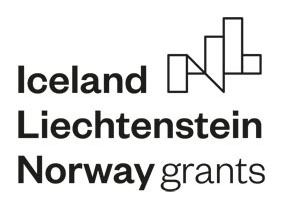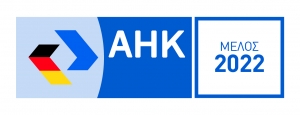Decontamination – European & National Legislation
European Directives on remediation of contaminated soil are as follows:
- Directive 2000/60/ EC [2] of the European Parliament and of the Council of 23 October 2000 establishing a framework for community action in the field of water policy. In the context of the protection of the quality of groundwater and surface water, the monitoring of soil and air pollution as sources of harmful substances is included.
- Council Directive 96/61/ EC [3] of 24 September 1996 concerning integrated pollution prevention and control. The purpose of the Directive is to design and operate certain installations so as to ensure the protection of the environment. Article 3 states:
‘Member States shall ensure that the designated authorities ensure that the installation will operate in such a way that:
…(f) the necessary measures are taken upon definitive cessation of activities to avoid any pollution risk and return the site of operation to a satisfactory state.
In addition, pursuant to Article 9, an operating license for an installation is granted subject to conditions including:
…3. The permit shall include emission limit values for pollutants, in particular, those listed in in Annex III, likely to be emitted from the installation concerned in significant quantities, having regard to their nature and their potential to transfer pollution from one medium to another (water, air and land). If necessary, the permit shall include appropriate requirements ensuring protection of the soil and ground water and measures concerning the management of waste generated by the installation.
A proposal for a directive on environmental liability with regard to the prevention and remedying of environmental damage [4] was also launched in early 2002. In the proposal, environmental damage is defined with reference to biodiversity and water in the Framework-Directive on water and human health, including those cases where it is threatened by soil contamination. (EC Draft Directive on prevention and restoration of significant environmental damage (White Paper on Environmental Liability). Issued by DG Environment on 30/07/2001)
Responsibility should ensure that in the future, the polluter undertakes clean-ups to deal with pollution or pays the cost of rehabilitation, and so the responsibility should encourage a socially more effective prevention by the responsible parties and therefore be more socially efficient.
Given the importance of proper prevention and rehabilitation, Member States should ensure that the necessary remedial or preventive measures are taken in cases where the “polluter pays” principle is not feasible.
In such cases, Member States are invited to adopt the provisions they deem necessary and consistent with their respective legal systems, provided that the necessary preventive or rehabilitation measures are thereby secured.
Appropriate alternative financing measures shall apply while taking into account the preservation of the underlying responsibility of the operators if they are later identified or have been later proven to have sufficient financial means to bear the cost of the rehabilitation measures taken.
Annex II defines the following for remediation of contaminated soil:
“Where soil or subsoil pollution entails or may cause serious harm or risks to human health, the necessary measures shall be taken to ensure that infectious agents are controlled, restricted, shrunk or eliminated so that the contaminated soils do not constitute a more serious threat or potential threat to human health that would be incompatible with their current or expected future use. Possible future use should be ensured bases on the applicable land-use regulations at the time of the damage occurrence. ”
Member States are required to incorporate the Directive into national law by 30 June 2005 at the latest and its application is valid for losses incurred after that date.
In Greece there is no specific legislation on soil management and remediation of contaminated sites. Relevant provisions are usually found in more generic laws on environmental protection and waste management. In Greece, in particular, the following provisions apply:
Law 1650/1986 on the Protection of the Environment
Article 10 of the Act states that a Joint Ministerial Decision defines the following:
- measures and ways of protecting soil from natural damage, in particular from erosion, lack of aeration, drying, over-aging, structure destruction, salinisation, unfavorable horizons, chemical depletion, over-fertilization or inappropriate fertilization, addition of toxic substances from the use of fertilizers and pesticides, to maintain and increase their productivity.
- the areas where final disposal of toxic and hazardous waste and sludge is permitted. By decision of the authorised prefecture, following the opinion of the Local Authorities, the sites where the final disposal of solid waste is allowed are determined on a case-by-case basis.
- restrictions or prohibitions on the production, importation and marketing of pesticides and fertilizers that pose a risk of pollution. By a similar decision it is possible to determine methods, conditions and restrictions for the disposal of sludge from waste treatment in agriculture.
Joint Ministerial Decision 26857/553/88 Government Gazette 196B “Measures and restrictions for the protection of groundwater from discharges of certain dangerous substances
Joint Ministerial Decision 69728/824/96: Measures and conditions for the management of solid waste
Article 8 requires the formulation of a framework for technical specifications by the committee responsible, set up by the Article, for measures including, among others, the rehabilitation of treatment facilities and disposal sites after their closure, as well as uncontrolled waste disposal and recovery sites.
Article 12 establishes that solid waste operators who have been operating without a permit within an uncontrolled waste disposal or waste facility over the last 10 years and who have abandoned the facility, are obliged within 8 months of the effective force of the Joint Ministerial Decision to apply to the relevant Environmental Service of the Prefectural Authority for the granting of a permit for the rehabilitation of the aforementioned sites. The operators will have to comply fully with the terms of the license within 6 years of its issuance.
Joint Ministerial Decision 113944/97: National Solid Waste Management Plan
National Planning includes the restoration of environmental damage in its objectives, achived by the closure of uncontrolled disposal sites, the gradual improvement of the contaminated landscape and the measures for substantial elimination of the pollution caused.
Joint Ministerial Decision 19396/1546/97: Measures and Conditions for the Management of Hazardous Waste
Α Technical Specification Committee for hazardous waste management measures was also established for special waste, among which, the rehabilitation and remediation of contaminated sites from hazardous waste. Article 12 also stipulates that the necessary expenditure will be covered:
A. The natural or legal person who handled or is handling the hazardous waste and caused the pollution.
B. From the state budget, in cases where abandoned hazardous waste disposal sites or treatment plants and given that the identity of the producer or holder of the hazardous waste can not be ascertained.
Determination of remediation limits
In the aforementioned legislation the procedures for assessing the risk of contaminated soil, the design and implementation of remediation, nor limits to be met for chemicals in the soil are defined.
At a European level (for each country individually) soil management involves the correlation between quality of soil and groundwater and the intended land use. Two major categories stand out:
- “Sensitive” use (recreation, home)
- ‘Less sensitive’ use (industry, trade)
Each national law provides guidelines and limit values for various pollutants for each category of ground and respective groundwater.
In our country there is currently no corresponding regulation that correlates the quality of soil and groundwater with land use.
The target concentration of soil and groundwater decontamination is usually defined according to international and European standards, taking into account a relevant Environmental Risk Assessment Analysis for each individual contaminated field until a relevant Greek Legislation is enforced.
There is a number of internationally available Soil Deletion Limit Guidelines for various organic pollutants such as the New Dutch List, the Canadian List, the Kelly Index for Formulated GCL Guidelines for Contaminated Soils, New Jersey State Decontamination Limits (US, Soil Clean Up Criteria).
However, the trend in sanitation projects is that these limits are only used as guidelines and that the required detergency limits (target concentrations) are to be determined on the basis of site-specific clean up levels and can either be even more stringent than the original reference list (particularly sensitive environmental areas) or less stringent (in less environmentally sensitive areas).
In Greece, there are still no corresponding limits on soil decontamination. In Central European countries where the problem of contaminated land has been the subject of an investigation over the past two decades, different pollution control limits for each pollutant apply depending on the type of existing or future use of the field.



